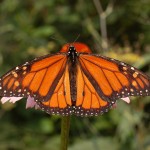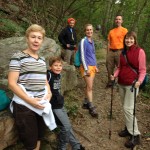 Schedule: The Duncannon Outdoor Club will host a hike every third Saturday of each Month. The time of day when the hike occurs will depend on the hike event for that particular Saturday. Dates may change due to conflicts. Call Deb Takach at 395-2462 or email dtakach@duncannonatc.org to register for any of the following hikes. the ground make sure to wear hiking boots and if you have micro spikes or yak tracks bring them. Learn about the White Tailed Deer. Meet at the Duncannon Family Health Center at 9:00 am. or alternately at Little Buffalo Office parking lot at 9:30am. Call 395-2462 or email dtakach@duncannonatc.org to register.
Schedule: The Duncannon Outdoor Club will host a hike every third Saturday of each Month. The time of day when the hike occurs will depend on the hike event for that particular Saturday. Dates may change due to conflicts. Call Deb Takach at 395-2462 or email dtakach@duncannonatc.org to register for any of the following hikes. the ground make sure to wear hiking boots and if you have micro spikes or yak tracks bring them. Learn about the White Tailed Deer. Meet at the Duncannon Family Health Center at 9:00 am. or alternately at Little Buffalo Office parking lot at 9:30am. Call 395-2462 or email dtakach@duncannonatc.org to register.
Feb. 20th – Come to an average paced in and out hike on the Stoney Valley Rail Trail for a total of 4 miles on easy terrain. We will be discussing Leave No Trace and hiking etiquette. Meet at 9:00 at the Duncannon Family Health Center or alternately at the Dauphin Park and Ride at 9:30 am. Call 395-2462 or email dtakach@duncannonatc.org to register.
Mar. 12th – Come to the Middle Creek Wildlife Management Area and observe the migration of thousands of Snow Geese and Tundra Swans as they touch down at this important way station. Then hike an average paced 6 mile hike over moderate to easy terrain on a series of trails that form a loop back to the visitor’s center. There are 2 climbs ranging from 300 to 400 ft. Meet at the Duncannon Family Health Center to carpool at 8:30 am or alternately at the Kmart parking lot at 9:00am. Call 395-2462 or email dtakach@duncannonatc.org to register. Please reimburse drivers 10 cents per mile and for turnpike tolls. Bring your cameras and binoculars if you have them.
April 16th – Come to a family, kid, dog friendly 3 mile average paced hike on easy terrain at the Wildwood Nature Center. See how many items you can cross off your observation card. Dogs must be leased. Meet at the Duncannon Family Health Center at 9:00 am to carpool or alternately at the nature center at 9:30 am. Call 395-2462 or email dtakach@duncannonatc.org to register.
May 14th – Come a kid friendly scavenger hunt at the Cornerstone Christian Church Trails for a leisurely paced 1.43 mile hike over easy terrain. See how many hidden things can be found along the trail. This hike is appropriate for children 5 and up. Adults without children are also welcome. Meet at the Cornerstone Christian Church, Duncannon at 10:00 am. Call 395-2462 or email dtakach@duncannonatc.org to register.
June 12th (Sunday) – Join the DOC on a canoe trip from Blue Mountain Outfitters (BMO) to West Fairview for an opportunity to observe the egrets, cormorants, and herons raise their young on Wade Island. This trip will be under the guidance of Blue Mountain Outfitters with a cost of $29.40 per person for a group of 10, and $31.80 for less. Call 395-2462 or email dtakach@duncannonatc.org to register. We will meet at the Duncannon Family Health Center to carpool at 9:00 am. or alternately at BMO at 9:30 am.
July 16th – Join us for two, 1 mile hikes at Big Spring State Park in Blain. Witness the dying giant Hemlocks, and then hike to an unfinished railroad tunnel. Both hikes are average paced over moderate terrain. Bring a lunch. Learn about the Wooly Adelgid and how it is endangering our state tree, the Hemlock. Meet at the Duncannon Family Health Center at 10:00 am. to carpool. Please pay drivers 10 cents per mile for gas (80 miles total). Call 395-2462 or email dtakach@duncannonatc.org to register.
Aug. 20th – Hike from Scotts Farm to Sherwood Drive and back for a total of 2 miles on easy terrain at an average pace. We will learn to identify the different forms of poison ivy and poison sumac. We will be meeting at 9:00 am. at the Duncannon Family Health Center. Call 395-2462 or email dtakach@duncannonatc.org to register. This is a dog friendly hike, however, dogs must be leashed.
Sept. 17th – Hike up Hawk Rock at night. Bring flashlights or headlamps. We will be hiking in and out for a total of two miles over moderate to strenuous terrain at an average pace. At the top take in the view of Duncannon and the Juniata, Susquehanna rivers. Once at the top we will learn about the elusive critter the Porcupine. Meet at 7:00 pm. at the AT trailhead to Hawk Rock (across from Tubby’s Nightclub). Call 395-2462 or email dtakach@duncannonatc.org to register.
Oct. 15th – Join the DOC for a 3 mile average paced night hike through the wooded cross country trails behind Susquenita High School. The terrain is moderate to strenuous with a few short climbs. Stop at the abandoned cemetery for some scary stories told by Wilhalmina Dorotheea Roskabower Kaufman. Bring a sit upon if you wish to sit during the story telling. Bring flashlights or headlamps. Meet at the left side of the Susquenita High School Parking lot closest to the building at 7:00 pm. (309 Schoolhouse Rd. Duncannon – along 11/15) Call 395-2462 or email dtakach@duncannonatc.org to register.
Nov. 20th Want to learn how to identify trees? Come out for a hike with the DOC as we learn the secrets to tree identification. We will hike in and out for a total of 2 miles at an average pace over easy terrain off RT325 on state game lands. Make sure to wear orange. Meet at the Duncannon Family Health Center at 9:00 am to carpool or alternately at 9:30 am. at the intersection of RT225 and RT325 (parking area 40.38867,-76.94168). Call 648-8226 or email psmith@duncannonatc.org to register.
Dec. 17th – Come to Pine Grove Furnace and hike from the furnace stack to Railroad Bed Road, to Pole Steeple, and the Appalachian Trail for a 7 mile average paced loop hike on moderate to strenuous terrain. Learn about Lyme Disease and how PA has been the number one state for the most infections for the last 5 years. Bring micro spikes or Yak Tracks if you have them and there is snow on the mountain tops as we will be climbing a mountain that raises 500 feet in three quarters of a mile. We will meet at 8:30 am. at the Duncannon Family Health Center to carpool or alternately at the furnace stack parking lot at Pine Grove Furnace around 9:30 am. Call 395-2462 or email dtakach@duncannonatc.org to register. Wear orange.
 The second Saturday of each month our community has the opportunity to dispose of recyclable materials, saving tons of waste from going to a landfill. From 8-11am at the Recycling Center in Penn Township, alongside Shermans Creek, recyclable materials can be dropped off. This is the same parking area used to access one of our favorite hiking destinations, Hawk Rock. Borough residents can set recyclables at their front doorstep for pickup, as well.
The second Saturday of each month our community has the opportunity to dispose of recyclable materials, saving tons of waste from going to a landfill. From 8-11am at the Recycling Center in Penn Township, alongside Shermans Creek, recyclable materials can be dropped off. This is the same parking area used to access one of our favorite hiking destinations, Hawk Rock. Borough residents can set recyclables at their front doorstep for pickup, as well.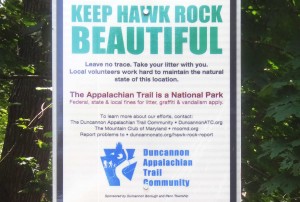 This past Saturday, February 13, most of us had no thoughts of climbing out from under our warm blankets. The temperature was single digit and the winds were gusting between 20 and 40 miles per hour! Yes, the sun was shining bright but if you did not have to go outside, you probably did not. These conditions did not stop the scouts and their helpers to be at the Recycling Center before 8, bundled up awaiting tons of recyclables to be delivered. After all they have been doing this for more than 70 years!
This past Saturday, February 13, most of us had no thoughts of climbing out from under our warm blankets. The temperature was single digit and the winds were gusting between 20 and 40 miles per hour! Yes, the sun was shining bright but if you did not have to go outside, you probably did not. These conditions did not stop the scouts and their helpers to be at the Recycling Center before 8, bundled up awaiting tons of recyclables to be delivered. After all they have been doing this for more than 70 years! Money can still be collected for certain materials today such as aluminum cans. Paper once put money back in the pocket of these dedicated scouts. Today our paper is being sent to a Perry County farmer to be used for bedding material. At one time there was enough money being returned to the Troop that individual scouts could earn credit for their hard work and dedication. Scouting supplies could be purchased or camping trips paid for. This was great incentive for the young boys to continue working toward their goals. Today, with less monetary incentive, they continue to take pride in their work and have a positive influence in their community.
Money can still be collected for certain materials today such as aluminum cans. Paper once put money back in the pocket of these dedicated scouts. Today our paper is being sent to a Perry County farmer to be used for bedding material. At one time there was enough money being returned to the Troop that individual scouts could earn credit for their hard work and dedication. Scouting supplies could be purchased or camping trips paid for. This was great incentive for the young boys to continue working toward their goals. Today, with less monetary incentive, they continue to take pride in their work and have a positive influence in their community.

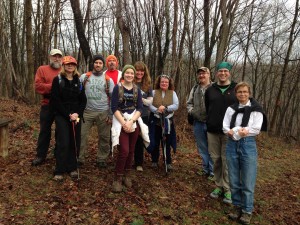
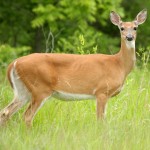
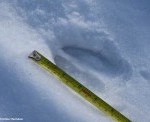
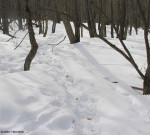
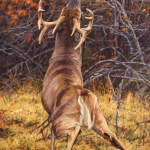
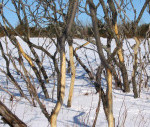
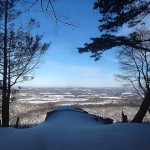
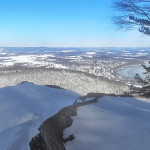

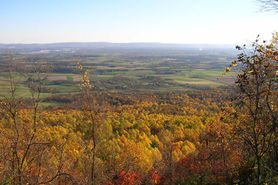
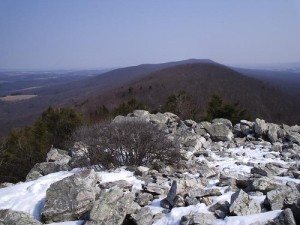
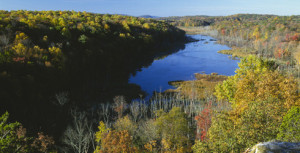

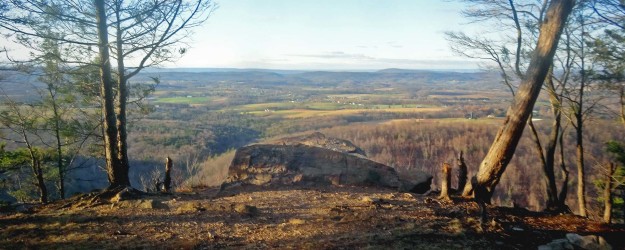
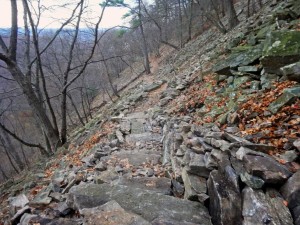
![smallbrownbat707.JPG[1]](https://duncannonatc.org/wp-content/uploads/2015/11/smallbrownbat707.JPG1_-300x237.jpg)
